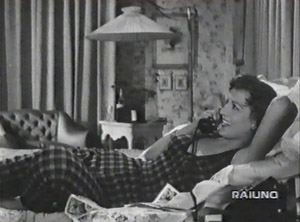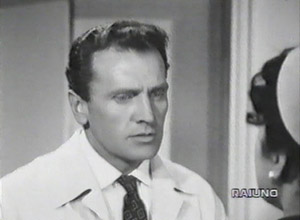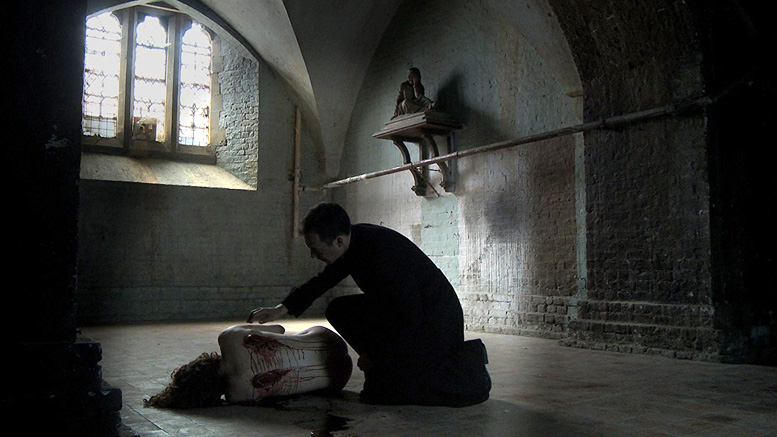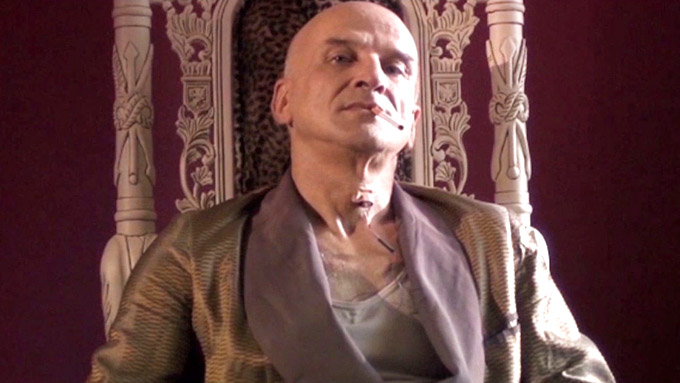
Aka Silvana (Germany)
Italy
1953
Produced by Raffaello Matarazzo for Lux Film & P.A.R. Film
Director: Raffaello Matarazzo
Story: Aldo De Benedetti, Alessandro Continenza, Raffaello Matarazzo
Screenplay: Aldo De Benedetti, Ennio De Concini [uncredited on Italian print], Alessandro Continenza, Raffaello Matarazzo
Cinematography: Rodolfo Lombardi {Gevacolour}
Music: Annibale Bizzelli
Editor: Mario Serandrei
Art director: Ottavio Scotti
Cast: Silvana Pampanini (Elena Fanti), Massimo Girotti (Dott. Guido Aureli), Gianni Santuccio (Luigi Moretti), Irene Papas (Clara), Giorgio Capecchi (the police commissioner), Gualtiero De Angelis (the chief of police), Anita Durante (the concierge), Franco Fabrizi (Viaggiani), Teresa Franchini (Mother Superior), Enrico Glori (the prison director), Patrizia Lari (Elena’s chambermaid), Rita Livesi (a nurse), Nino Marchesini, Dina Perbellini, Bella Starace Sainati (a sister), Aldo Silvani (the hospital chief), and with the little Maria Grazia Sandri (Anna, Elena’s daughter) and the participation of Flo Sandon’s (singer at the nightclub).
Uncredited: Alma De Río, Paolo Ferrara (Sig. Fanti, Elena’s father), Amina Pirani Maggi (a prison guard), Adriana Facchetti (a prison guard), Anna Maria Di Quattor
In the early 1950s, the melodrama was the genre of choice for Italian audiences; whether they be rich or poor, sophisticated or uneducated. With their sense of heightened emotion and fatalistic scenarios, these were formulaic films that re-used situations and storylines in much the same way as the Spaghetti Western or the Peplum. The difference being, perhaps, that this kind of melodrama was merely a specific manifestation of the melodramatic, a style of storytelling that, although universal, seemed particularly entwined within Italian culture, integral in entertainment from the Opera to comic strips (the fotoromanza). Furthermore, although the melodrama was a readily defined type of film from a specific period and of a specific form, the melodramatic was a style of storytelling that was latent within many of the other genres of Italian film that were to become popular in later years.
Elena Fanti (Silvana Pampanini) is shocked to arrive home one day and find that her father has killed himself. It appears that he’d managed to get himself into financial difficulties, and had owed the bank a considerable amount of money; money which she is now left to pay off. It appears there’s only one way for Elena to cancel the debts: by marrying their bank manager, Luigi Moretti (Gianni Santuccio), who has been pursuing her unsuccessfully for some time. Although understandable, such a course of action also means that she is left with no option but to break off her engagement to her true love, Doctor Guido Aureli (Massimo Girotti).
Despite her doubts, the marriage takes place and, for a short while, things seem to be going reasonably well: they have a child, a big house and are comfortably off. Beyond this, however, the circumstances of their union are causing the relationship to become increasingly troubled. Luigi begins an affair with a young woman called Clara (Irene Papas) and, whilst out driving with her one night, is caught up in a car crash. Whilst Clara is fine, and leaves the wreck before the police arrive so as to keep their liaison secret, Luigi is left paralysed from the waist down.
Quite coincidentally, the Doctor assigned to treat him is Guido, who doesn’t waste much time in trying to persuade Elena to run away with him. Sorely tempted as she is, Elena can’t bring herself to abandon her husband; which makes it all the more suspicious when he is found dead. The police promptly arrest her, figuring that she’d deliberately given him an overdose of his medicine. This leaves it up to Guido to prove her innocence and unravel the identity of the true killer.

Vortice has just about all the melodramatic check boxes ticked off: true love interrupted, a dark secret from the past pushing its way into the present, a vulnerable child, a murder and some kind of debilitating illness or disability. The whole narrative is targeted towards triggering the tear ducts of the post-war Italian audience, all of which can make it seem rather overwrought to the contemporary viewer (and especially the habitually cynical, hard-hearted English viewer). It all gets extraordinarily ripe in the final half hour, with poor Elena confined to a prison cell and her unfortunate daughter dispatched to an orphanage (where she is bullied and falls grievously ill, natch).
As with most of the melodramas, the emphasis is firmly on dialogue rather than action. Although it may sound as though the plot has thriller elements, these are really quite peripheral, while the tension is built up through the story rather than any kind of cinematic trickery. This does mean that it all has a somewhat stagy feel, not least because the camerawork is almost wholly static apart from the occasional pan into close up. The stock shot is of two or sometimes three characters talking to each other (rather than moving), although there are some exceptions to this (notably at the climax in which several characters gather on a staircase as Elena threatens to kill herself).
This old-fashioned feel is furthered by the use of some extremely dated editing techniques, some of which – screen wipes, for instance – have even come back into vogue again. And a certain lack of sophistication is betrayed by the occasional poverty-row giveaway (a car crash filmed with blatant toy cars – in which the passengers have time to bite their fingers in a ‘worried’ fashion before careening off the road – and a scar that’s visibly not there when filmed from certain angles). However, despite this lack of modernity, it’s all filmed capably enough, with nice use of the black and white medium for shadows and lighting.
Rafaello Matarazzo was the King of Melodramas, a talented filmmaker who introduced decent production values to a type of film which had habitually been previously made on the cheap. Curiously, this was the first of two films he made in close succession for Lux Film, the biggest production company in Italy at the time, rather than his usual financiers Labor and/or Titanus (the other being Torna! (54)). His biggest hit was the phenomenally successful Catene (49), while most of his subsequent work was similarly profitable at the box office. In all honesty, Vortice isn’t one of his more acclaimed films, but it’s still well worth a quick look as an interesting curio. Matarazzo never really made a mark once the genre had faded in the late fifties and died at the age of 57 in 1966.
Given the theatrical nature of the production, a lot rests with the performers, who all do a decent job. Silvana Pampanini was a huge star at the time, thanks to appearances in the likes of O.K. Nero (O.K. Nerone, 51), although she does seem a little old for the part (partly because she comes across as rather maternal here, hardly the sex-bomb look associated with Gina Lollobrigida or Sophia Loren). Nevertheless, she looks suitably distressed for the entire 100 minutes, which is just about the main thing she’s called on to do. Irene Papas has more fun as a femme fatale, while Gianni Santuccio and Massimo Girotti (from In nome della legge (49)) are effective as the male leads.

